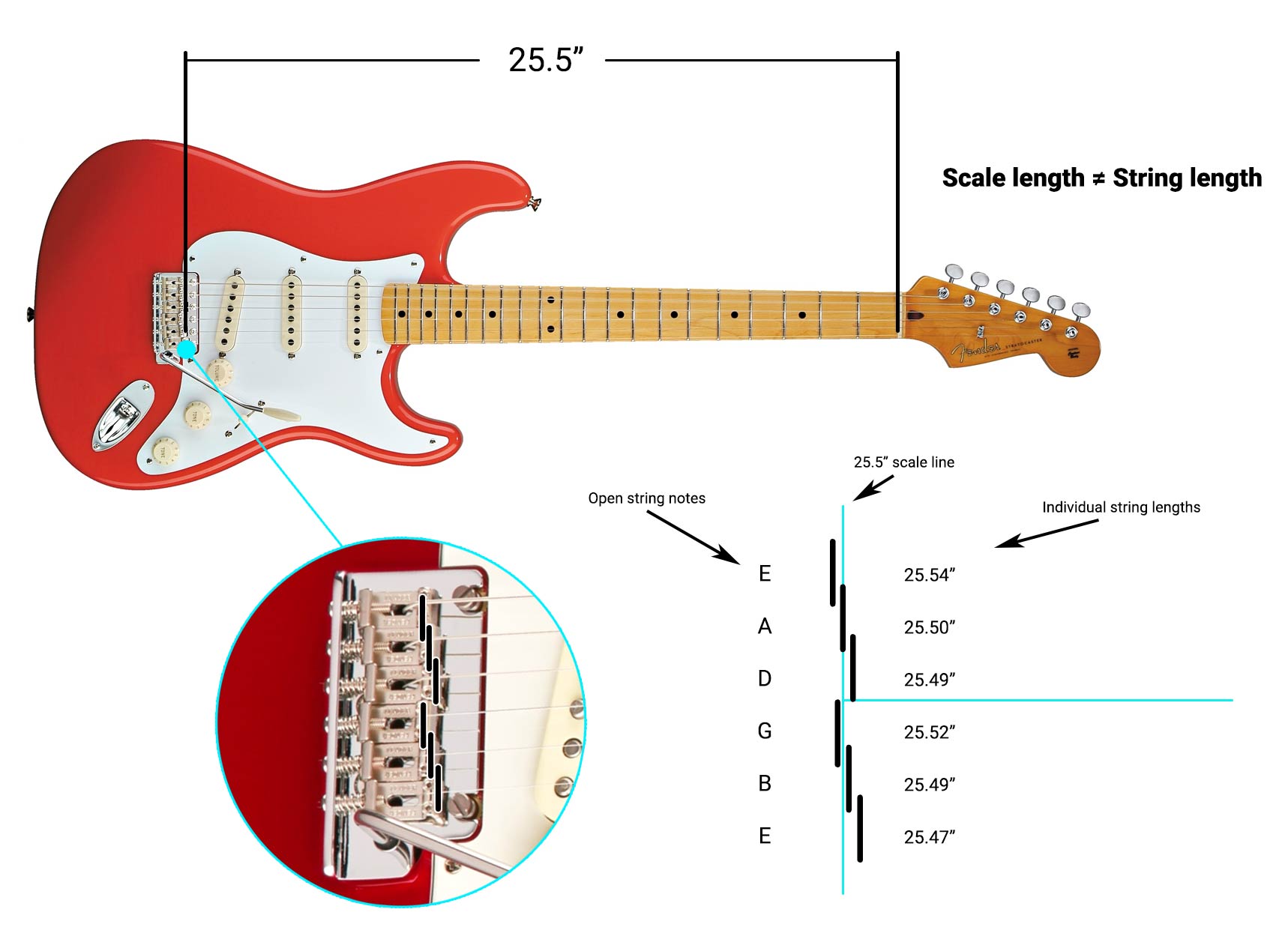Tired of sounding like a cat stuck in a blender every time you play your guitar? Fear not, dear reader, for we have the ultimate guide to help you master the elusive art of guitar intonation. Say goodbye to those sour notes and hello to sweet, sweet harmony. Get ready to rock like never before with our complete setup guide to achieving pitch perfection.
Contents
- 1 Understanding the Basics of Guitar Intonation
- 2 Evaluating Your Guitar’s Current Intonation
- 3 Tools and Equipment Needed for Intonation Setup
- 4 Step-by-Step Guide to Adjusting the Saddle for Improved Intonation
- 5 Fine-Tuning the Truss Rod for Optimal Neck Relief
- 6 Troubleshooting Common Intonation Issues
- 7 Maintaining Your Guitar’s Intonation Over Time
- 8 FAQs
- 9 Rock on and Nail that Perfect Sound!
Understanding the Basics of Guitar Intonation
Let’s dive into the wild world of guitar intonation, shall we? It’s like trying to tame a wild beast, but with a bit of know-how, you can conquer this beastly task!
First off, what exactly is intonation? Think of it like tuning your guitar in different positions along the neck. It’s all about ensuring that every note, no matter where you play it, sounds sweet as a cherry pie. Who wouldn’t want their guitar to sound delicious?
So, how do you actually adjust your intonation? It’s not as scary as it sounds, my friends. All you need is a tuner, a screwdriver, and a little bit of patience. Simply fine-tune the length of your strings until each note sings true. Just remember, it’s all about balance, like juggling flaming torches… but significantly less dangerous.
And voila! With a flick of the wrist and a twist of the knob, you’ve conquered the ancient art of guitar intonation. Your guitar will thank you by sounding sweeter than a lullaby sung by angels. Now go forth, brave musician, and let your intonation skills shine!

Evaluating Your Guitar’s Current Intonation
So, you think your guitar is perfectly in tune, eh? Well, let’s put that claim to the test! Intonation is key when it comes to playing your instrument. If your guitar is not properly intonated, you might as well be playing a cat scratching its nails on a chalkboard!
First things first, whip out that electronic tuner and make sure your open strings are in tune. Once you’ve established that your strings are tuned to perfection, it’s time to move on to the next step. Grab a screwdriver and get ready to make some adjustments!
Now, pluck each string at the 12th fret and check if it matches the pitch of the open string. If it’s slightly off, fear not! That’s where your trusty screwdriver comes into play. Loosen or tighten the saddle screws on your bridge until the pitch matches perfectly.
Remember, it may take a few tries to get it just right, but once you’ve nailed that sweet spot, your guitar will be singing like a rockstar! So, don’t be afraid to dive in and tinker with your guitar’s intonation. Your ears (and your audience) will thank you!

Tools and Equipment Needed for Intonation Setup
Have you ever struggled with getting your instrument in tune? Fear not, for with the right tools and equipment, you can easily set up your instrument’s intonation like a pro!
First up, you’ll need a trusty tuner to help you accurately adjust your instrument’s pitch. Whether it’s a clip-on tuner or a pedal tuner, make sure it’s reliable and easy to read. After all, you don’t want to be guessing if you’re in tune or not!
Next, grab yourself a set of screwdrivers. No, not the kind you use to put together that Ikea furniture – we’re talking about precision screwdrivers that can adjust the saddles on your instrument. These little guys will help you fine-tune the length of each string, making sure they’re perfectly in tune.
Don’t forget about a well-calibrated ruler or measuring tape. Having the correct measurements for the distance between the nut and the bridge on your instrument is crucial for achieving proper intonation. No eyeballing it here – precision is key!
Lastly, a fresh set of strings can make a world of difference. Old, worn-out strings can affect your instrument’s intonation, so make sure to swap them out before diving into your setup. Remember, a well-maintained instrument is a happy instrument!
Step-by-Step Guide to Adjusting the Saddle for Improved Intonation
So you’ve got your trusty guitar in hand, but something just doesn’t sound quite right. Don’t worry, it’s not you, it’s probably just your saddle! Follow these simple steps to adjust your saddle and get that sweet intonation you’ve been dreaming of.
First things first, grab a screwdriver (preferably not the one you use for opening cans of paint) and locate the two screws on either side of the saddle. These bad boys are what you’ll be using to make those all-important adjustments.
Next, loosen the strings a bit so you can move the saddle back and forth with ease. **Warning:** If you hear a strange popping sound, don’t worry, it’s just your strings stretching – they’re just as excited for this adjustment as you are!
- Slide the saddle back and forth until the 12th fret note matches the open string note. It’s like a game of musical Tetris, but with way better music.
- Once you’ve found that perfect sweet spot, tighten those screws to lock the saddle in place. Congratulations, you’re one step closer to becoming the next guitar god!

Fine-Tuning the Truss Rod for Optimal Neck Relief
Alright, so you’ve got your trusty guitar and you’re ready to take your playing to the next level by . Don’t worry, it’s not as scary as it sounds – just follow these steps and you’ll be rocking out in no time!
First things first, grab yourself a trusty Allen wrench – make sure it’s the right size for your particular truss rod. You don’t want to be trying to tighten or loosen things with the wrong tool, trust me, I’ve been there and it’s not pretty.
Next, it’s time to get down to business. Insert the Allen wrench into the truss rod adjustment nut and give it a gentle turn to the right to tighten or to the left to loosen. Remember, you only want to make small adjustments at a time – we’re fine-tuning here, not performing major surgery. Be patient and take your time, Rome wasn’t built in a day and neither is a perfectly adjusted neck.
Once you’ve made your adjustments, it’s time to put your guitar through its paces. Strum a few chords, do some finger exercises, and see how it feels. If it’s still not quite right, don’t be afraid to go back and make some more adjustments. Finding the perfect balance of tension is key to achieving optimal neck relief. And remember, practice makes perfect – so keep at it and you’ll be a truss rod tuning master in no time!
Troubleshooting Common Intonation Issues
So you’ve picked up your guitar, strummed a few chords, only to realize that something sounds off. Don’t worry, we’ve all been there! Intonation issues are a common struggle for many guitarists, but fear not – we’ve got some tips to help you troubleshoot and fix those pesky problems.
Check your tuning: Before diving into intonation adjustments, make sure your guitar is properly tuned. Sometimes, a simple tuning session can solve a lot of intonation issues.
Adjust your saddle: If you find that certain fretted notes sound sharp or flat, it may be time to adjust your saddle. Use a screwdriver to make small adjustments to the saddle position until the intonation is just right.
Consider a setup: If you’ve tried everything and your intonation still isn’t up to par, it may be time for a professional setup. A skilled guitar tech can work wonders on your instrument and have it sounding and playing like a dream in no time.
Maintaining Your Guitar’s Intonation Over Time
So you finally found the perfect guitar with impeccable intonation. But how do you keep it that way over time? Here are some tips to help you maintain your guitar’s intonation and keep it singing sweetly:
1. Regularly check your guitar’s intonation: Just like how you check yourself out in the mirror every day, give your guitar some love by checking its intonation regularly. Grab a tuner, play some open strings, and make sure that each note is in tune all the way up the fretboard. If you notice any discrepancies, it might be time for a setup.
2. Keep your guitar properly humidified: Your guitar may love lounging in a dry, air-conditioned room, but that doesn’t mean it’s good for its intonation. Make sure to keep your guitar properly humidified, especially during dry winter months, to prevent any warping or shifting that could affect its intonation.
3. Change your strings regularly: Just like how you change your socks regularly (well, we hope you do), make sure to change your guitar strings regularly to maintain proper intonation. Old, worn-out strings can cause all sorts of tuning issues, so treat your guitar to some fresh strings every now and then.
FAQs
Why is guitar intonation important?
Well, let me tell you, if your guitar’s intonation is off, it’s like trying to drive a car with a banana in the tailpipe – it’s just not going to work right. Your notes won’t sound in tune across the entire fretboard, which can be pretty frustrating, especially if you’re trying to impress that cute musician at the open mic night.
How often should I check my guitar’s intonation?
Think of checking your intonation like going to the dentist – you don’t want to do it too often, but neglecting it can lead to some serious issues down the road. I recommend checking your intonation every time you change your strings or if you notice that your guitar suddenly sounds like a cat stuck in a piano.
What tools do I need to set up my guitar’s intonation?
Well, you’ll need a tuner, a screwdriver, a capo, a set of new strings, a measuring ruler, and a strong dose of patience. Oh, and maybe a pair of headphones to drown out the sound of your off-key playing while you work on your intonation.
Can I set up my guitar’s intonation myself, or should I take it to a professional?
Listen, if you’re the kind of person who reads the instruction manual before assembling your IKEA furniture, then go ahead and give it a shot yourself. But if you’re more of a “wing it and hope for the best” kind of guitarist, maybe leave it to the pros. Trust me, you don’t want to accidentally turn your guitar into a glorified ukulele.
Rock on and Nail that Perfect Sound!
Congratulations on taking the time to master guitar intonation! Your fingers may be sore, your ears may be tired, but the sweet sound of perfectly tuned chords will make it all worth it. Now go forth, play those riffs with confidence, and show off your newfound intonation skills. Rock on, guitar heroes!



